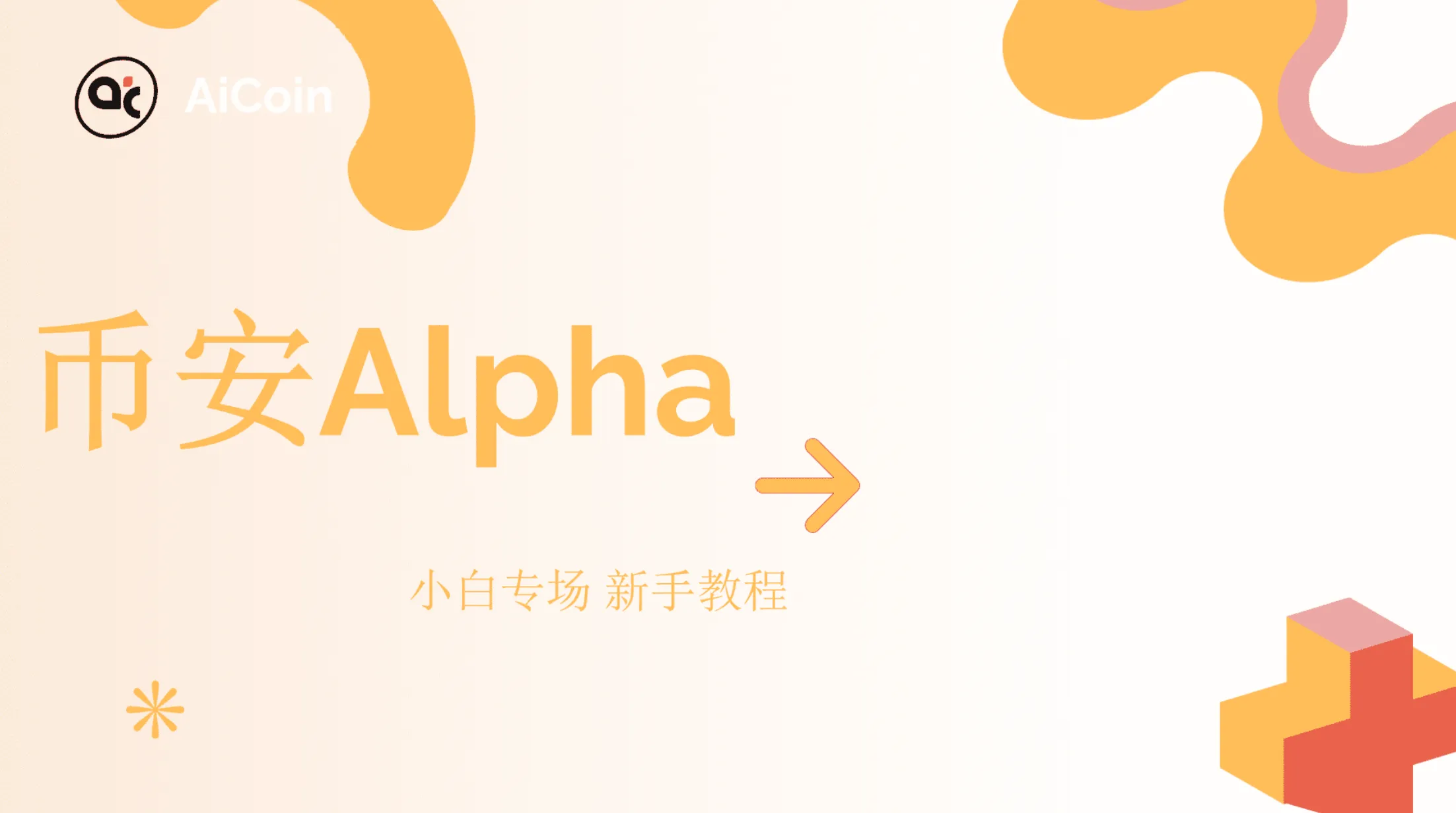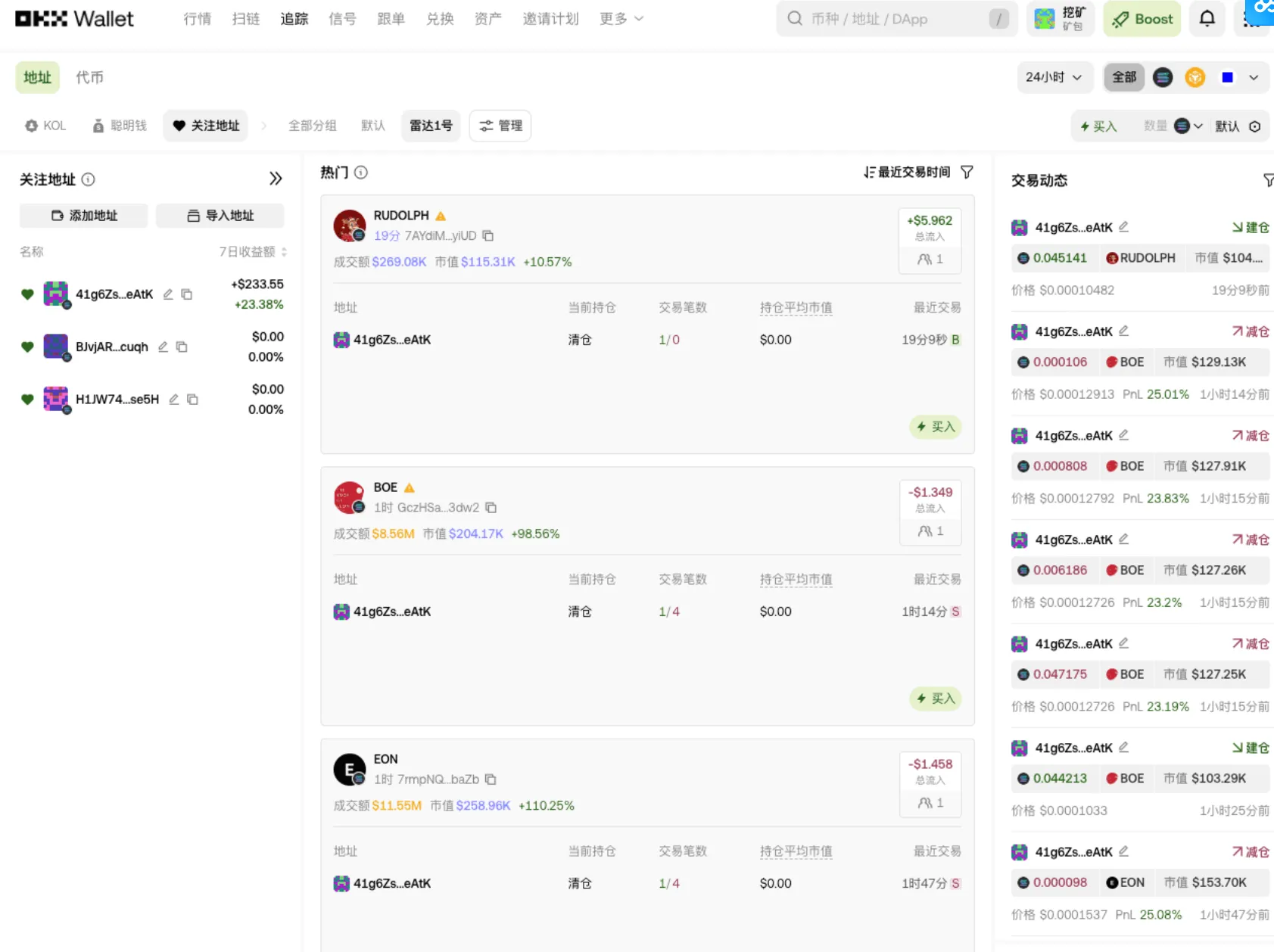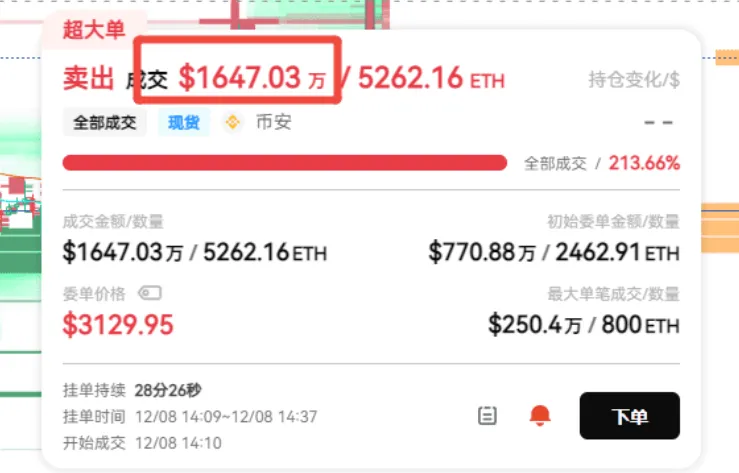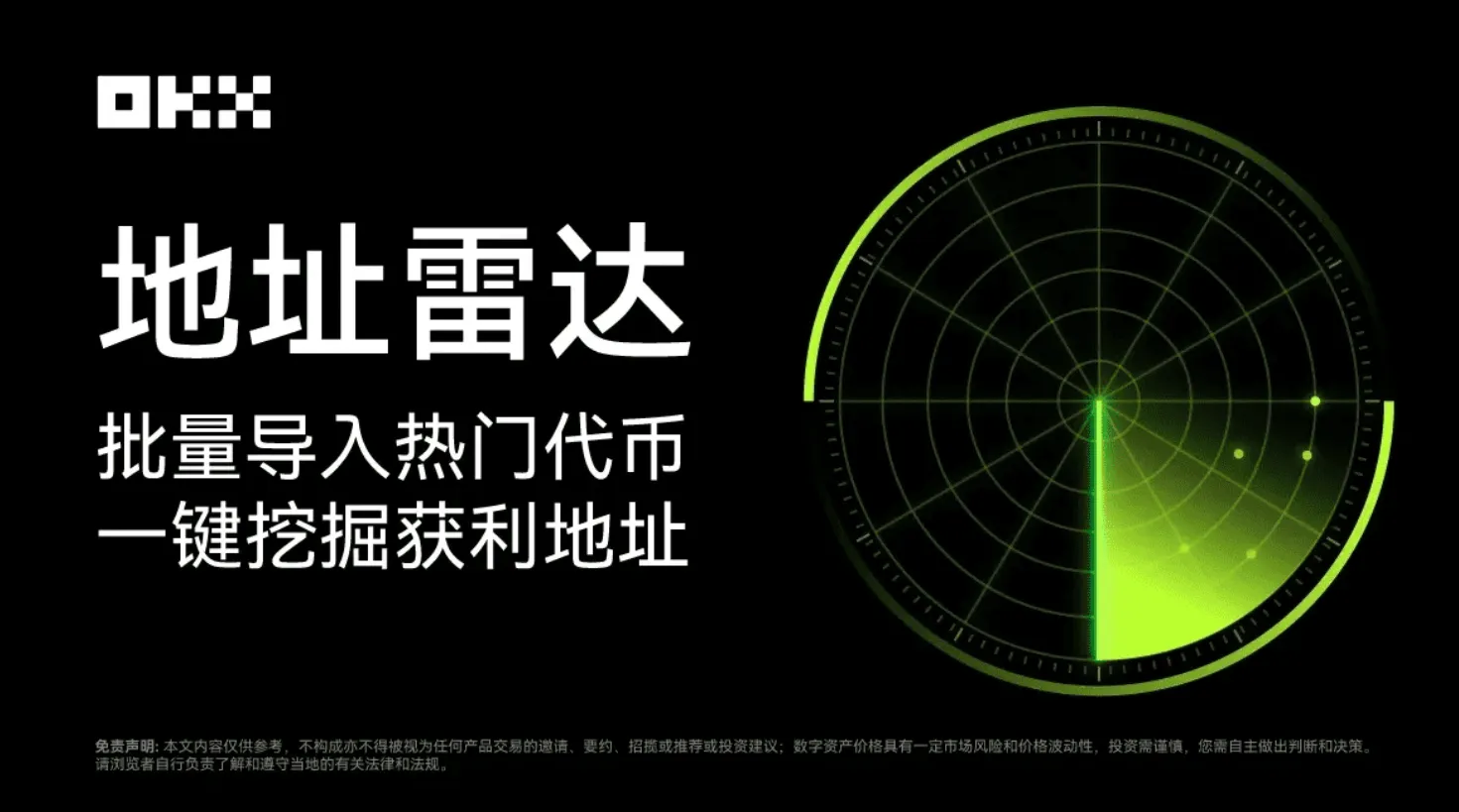On the afternoon of February 1st, AICoin researchers conducted a live graphic and text sharing session titled "Understanding the Secret Signals of Trading Volume (Free Membership)" in the AICoin PC-end Group Chat-Live. Below is a summary of the live content.
I. Relationship between Trading Volume and K-line
Any large positive or negative K-line represents the flow of capital. Trading volume directly reflects market participation and can help us understand the forces behind the current trend and potential trend changes.
II. Analysis of Volume-Price Structure
1. Analysis of Volume-Price Coordination
Under volume-price coordination, the quantity and price are determined by market supply and demand and trading dynamics.
(1) Supply and Demand:
When the supply and demand forces of both buyers and sellers are balanced, price changes are minimal. Therefore, in a balanced situation where there is neither significant buying pressure nor strong selling pressure, the trading volume is often small, and the corresponding K-line is also relatively short.
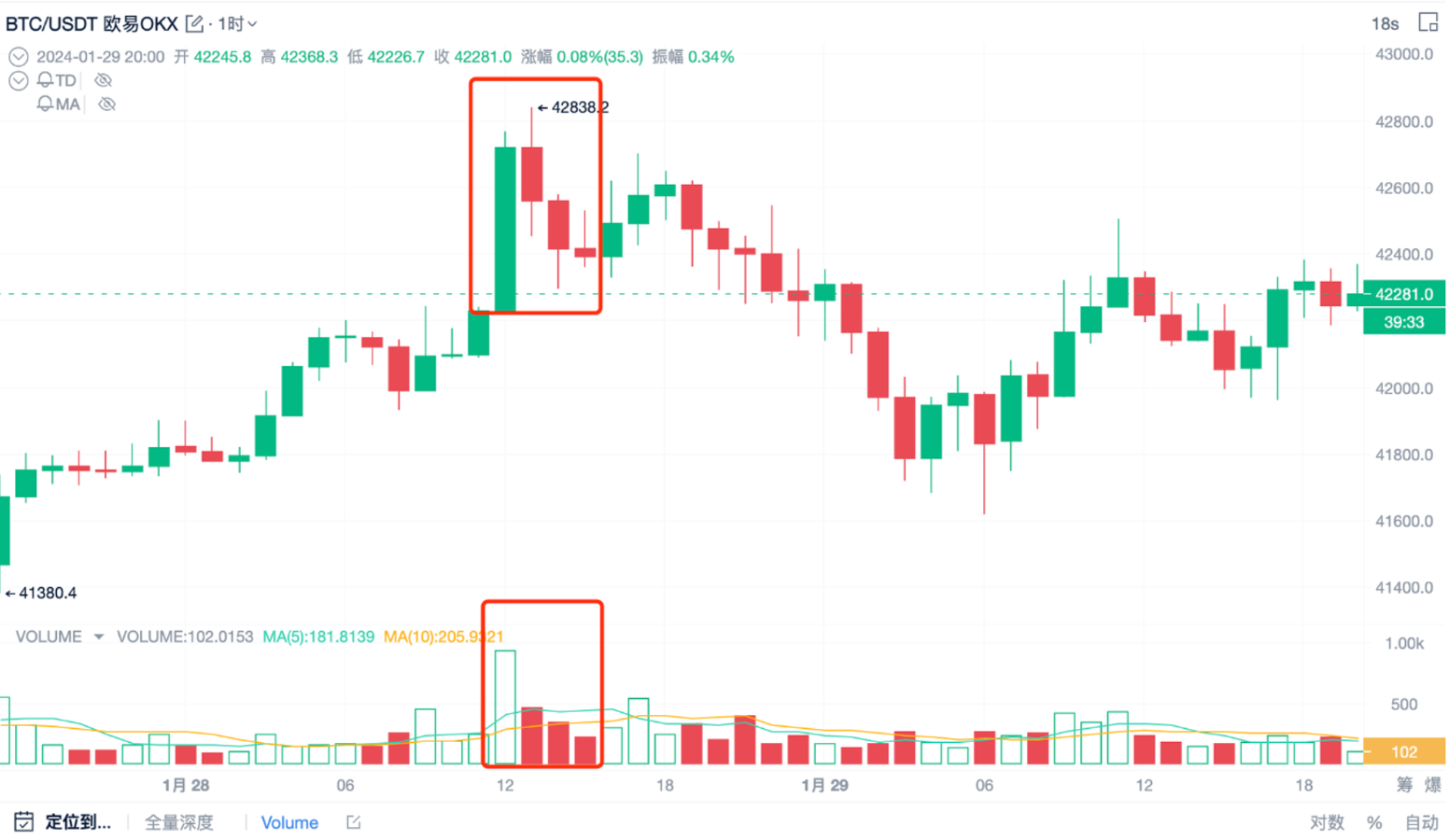
(2) Trading Dynamics
Large trading volume often indicates stronger participation from both buyers and sellers in the market. This may be triggered by market news, events, or analysis reports, leading to significant price fluctuations. When there is a strong trend in one direction, such as a significant price increase or decrease, the trading volume will increase accordingly, and the corresponding K-line entity will also be larger. Additionally, enthusiastic trading by participants and faster trading frequency can also lead to increased trading volume. Any new information or data can be quickly absorbed by the market and reflected in prices.
(3) Summary of Volume-Price Coordination
Summary: Under normal volume-price coordination,
Small trading volume corresponds to small K-lines, and large trading volume corresponds to large K-lines;
Volume and price are determined by supply and demand and trading dynamics.
2. Identification and Analysis of Abnormal Volume-Price
(1) Volume Increase without Price Increase
A. Reasons:
A large amount of main funds are placing orders in the market within a small price range, creating a situation of "volume increase without price increase";
Sellers keep pressing, small retail investors put money in, and absorb these small orders, leading to a bottom volume increase without price increase.
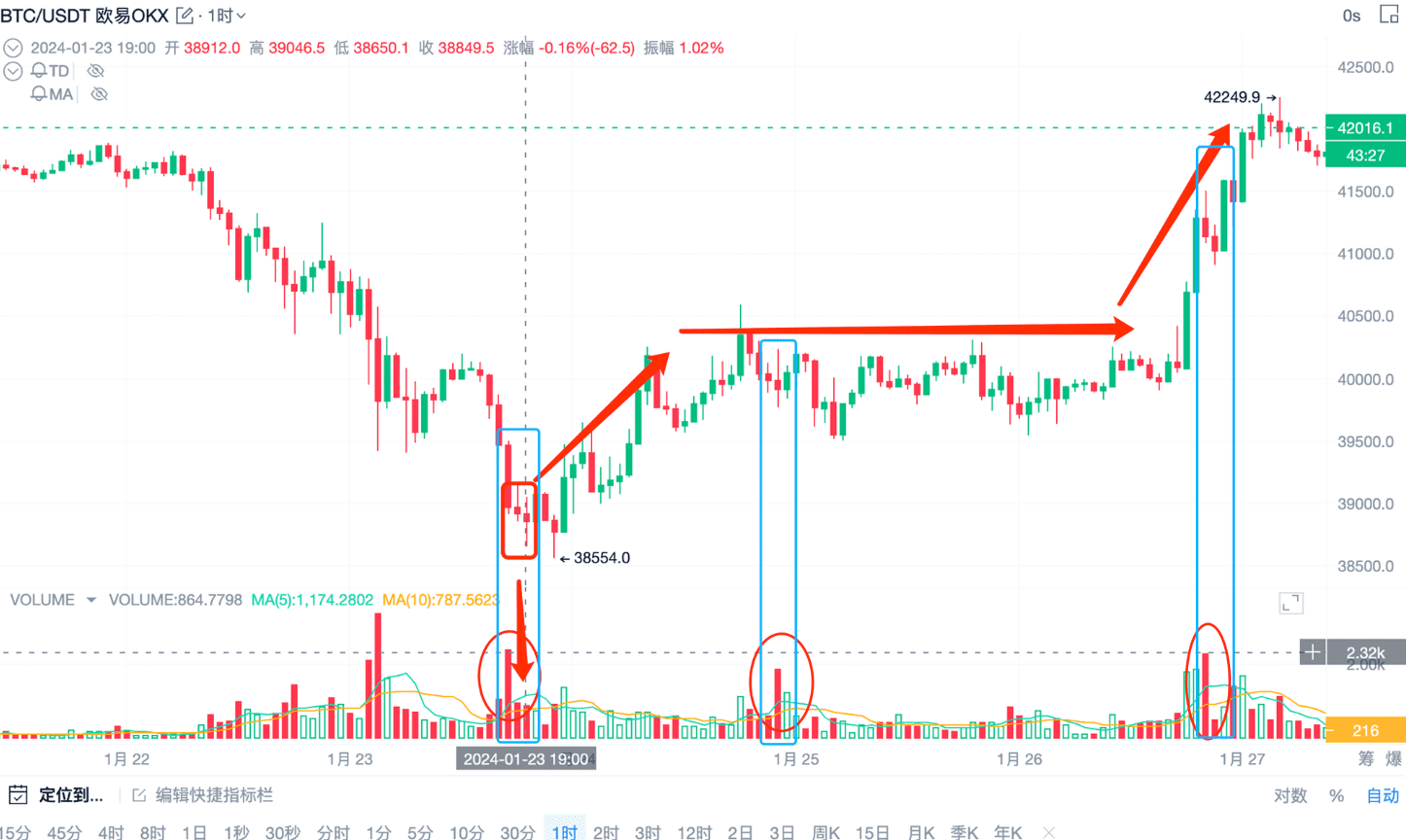
B. Analysis in Three Stages of Volume Increase without Price Increase:
We can divide a market cycle into [accumulation zone - rise zone - distribution zone - decline zone].
The three stages are: bottom volume increase without price increase, middle volume increase without price increase, and top volume increase without price increase.
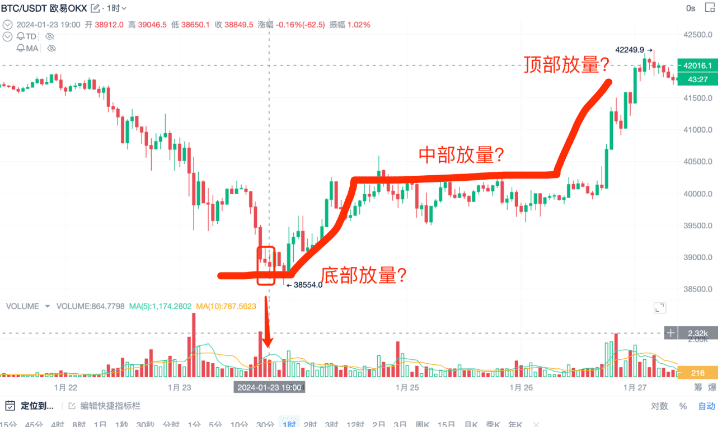
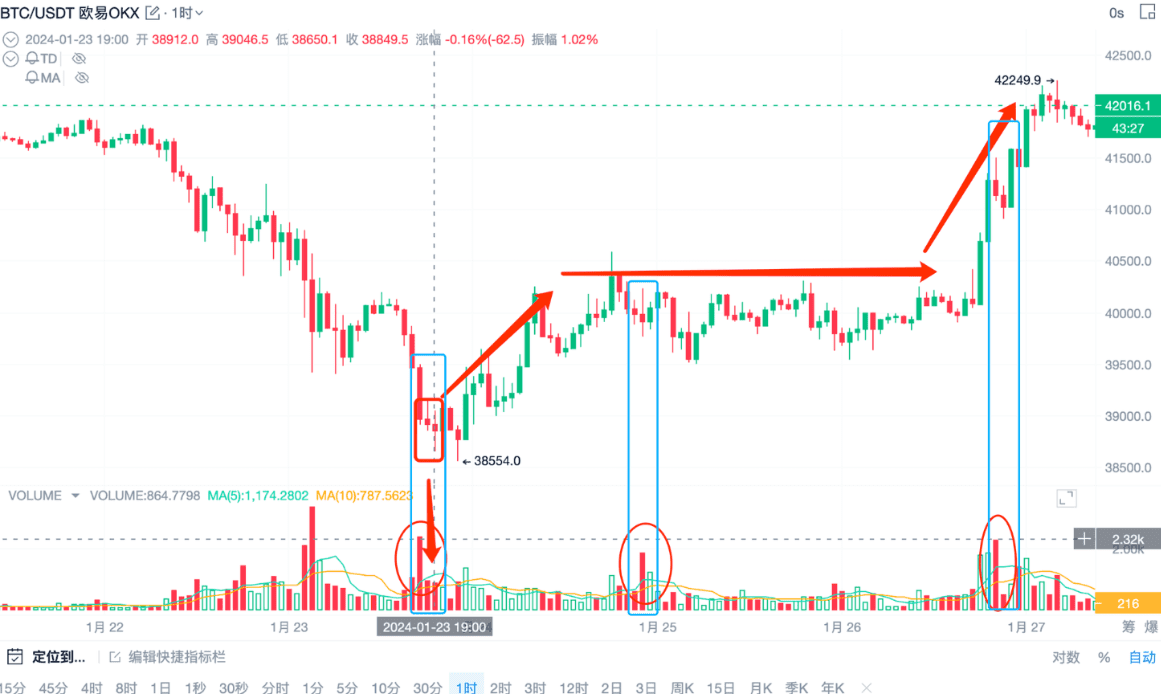
First Stage: Bottom Volume Increase without Price Increase [Good Phenomenon]
• Bottom: After a period of decline, a sideways trend begins in a certain price range, which is considered a potential support level, similar to reaching a "valley" in price decline.
• Volume Increase: Significant increase in trading volume over a certain period of time.
It indicates increased market participation, reflecting the intervention of more buying and selling forces.
• No Price Increase: Despite the increase in trading volume, the price does not increase significantly, indicating insufficient upward momentum in price.
• Interpretation: It may be that a manipulator or large funds are accumulating at a low level, or there is a selling-off and washing action. If there is no subsequent decline, this often indicates a potential buying opportunity, as it may signal the formation of a market bottom.
• Action: Pay attention to the subsequent price trend and changes in trading volume. If the subsequent trading volume decreases and the stock price stabilizes or begins to slowly rise, it may confirm the establishment of a bottom. A bottom is an excellent buying point.
Second Stage: Middle Volume Increase without Price Increase
• We observe the structure of volume inside?
I. Whether it conforms to volume-price matching
II. Support and pressure on the left, overall market index (see if there is a possibility of a third wave?) Middle volume increase without price increase: "possibility" of reverse distribution/rise/distribution (reverse distribution refers to institutions selling to themselves).
• Action: Observe the market's subsequent behavior to judge the trend. If the price starts to decline, it may be necessary to consider stop-loss; if the price continues to rise, it indicates that the previous volume increase may only be transitional stability or a display of accumulating strength.
Third Stage: Top Volume Increase without Price Increase
Overvalued speculation, far from value, bottom volume increase without price increase, this position is likely to be a distribution.
• Action: If the price falls below a key support level after a large volume, or if other technical analyses (such as patterns, indicators, etc.) indicate a sell signal, this may be a short or sell signal. Especially when combined with chart patterns of top reversal (such as head and shoulders), one should be more cautious.
C. Summary of Volume Increase without Price Increase:
Determine whether the large volume is at the bottom, middle, or top
Bottom volume increase: Pay attention, it may be an excellent buying opportunity
Middle volume increase: Need to observe the subsequent price behavior; consider stop-loss if the price declines; if it continues to rise, it may only be a temporary stability
Top volume increase: Breaking through a key position (combined with chart patterns, other methods) is a good phenomenon for short selling!!
(2) Volume Shrinks while Price Rises
A. Meaning: Price rises significantly while trading volume is low
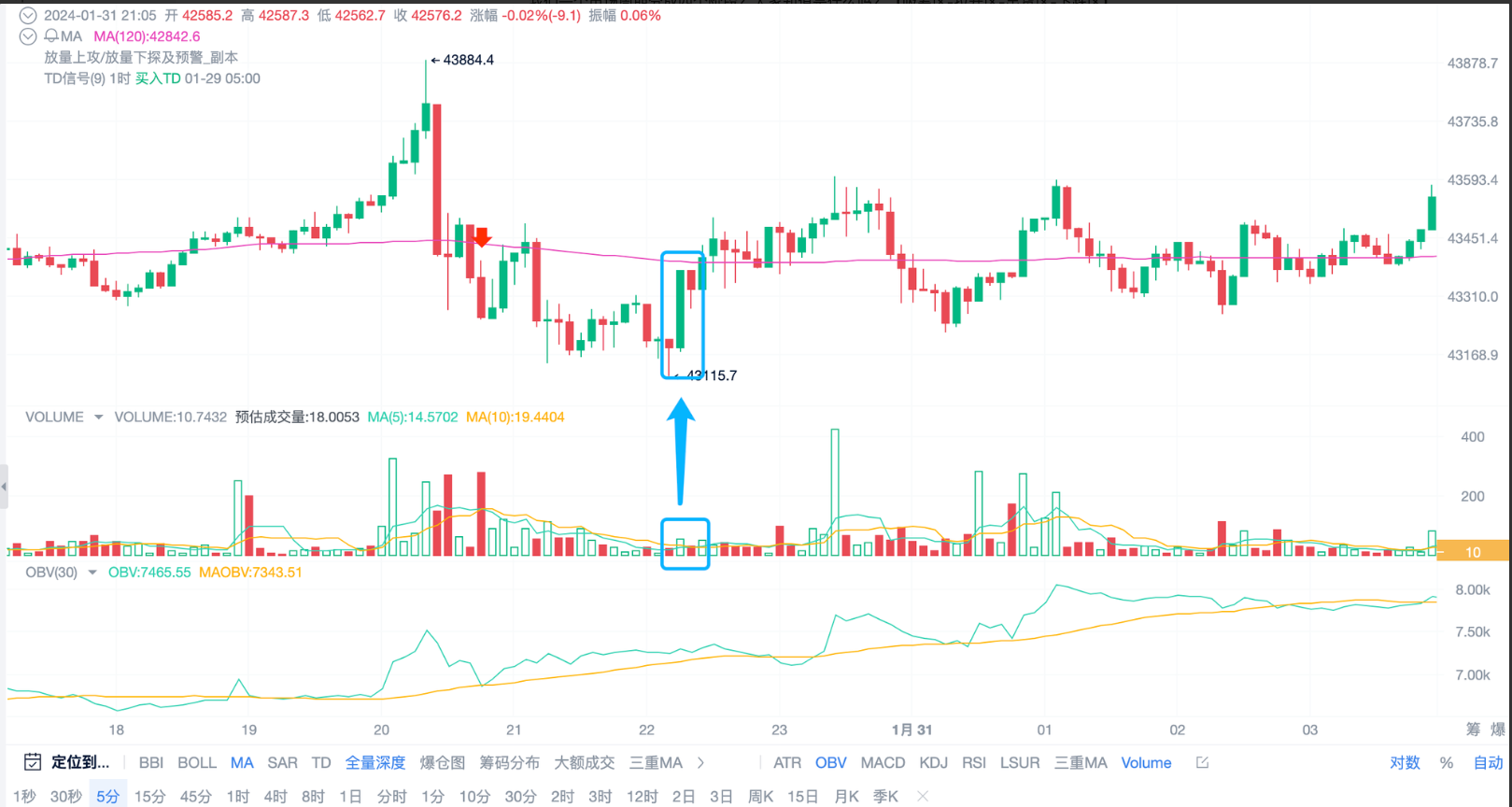
B. Analysis:
a. Funds and institutions enter; at this time, buying may lead to significant gains, patience is required, and a rally may be imminent.
b. No funds or institutions enter; after a rise, if it continues to rise, this may indicate that large institutions have missed out. However, this generally requires substantial news and fundamental factors. If it rises and then falls, this may indicate manipulation by the manipulator to test and see if anyone follows.
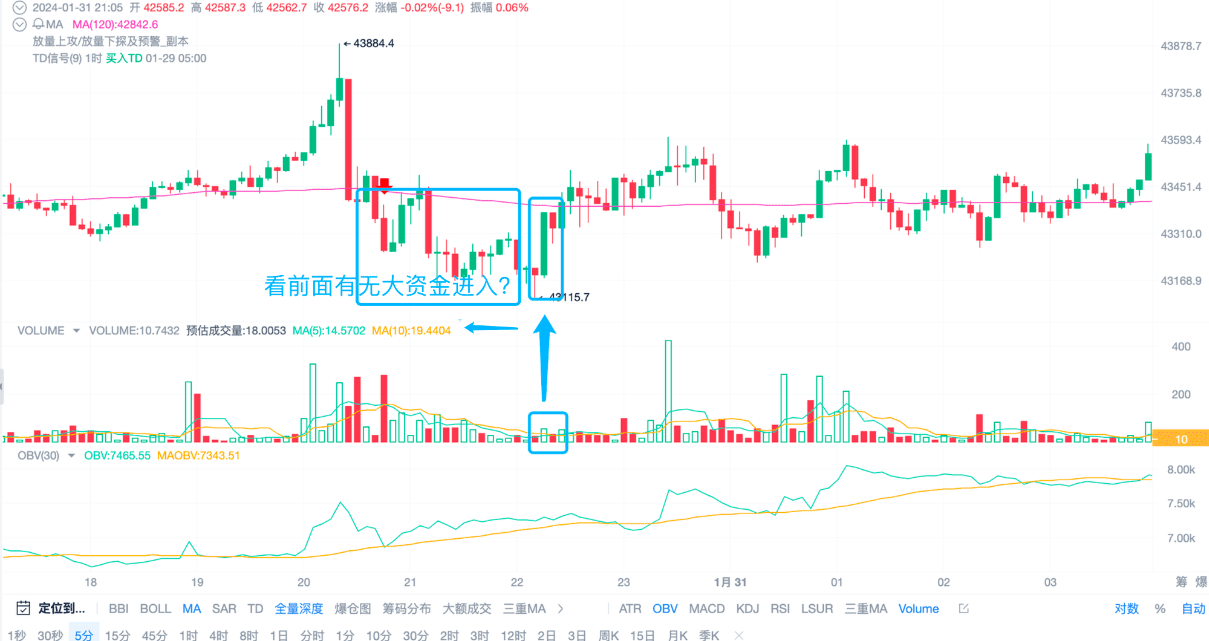
C. Summary of Volume Shrinkage:
Check whether there is a main force entering in the previous period,
Check for volume-price coordination in the previous period.
D. Three Methods to Determine Large Fund Entry:
First method: Click on the main force large order in the market,
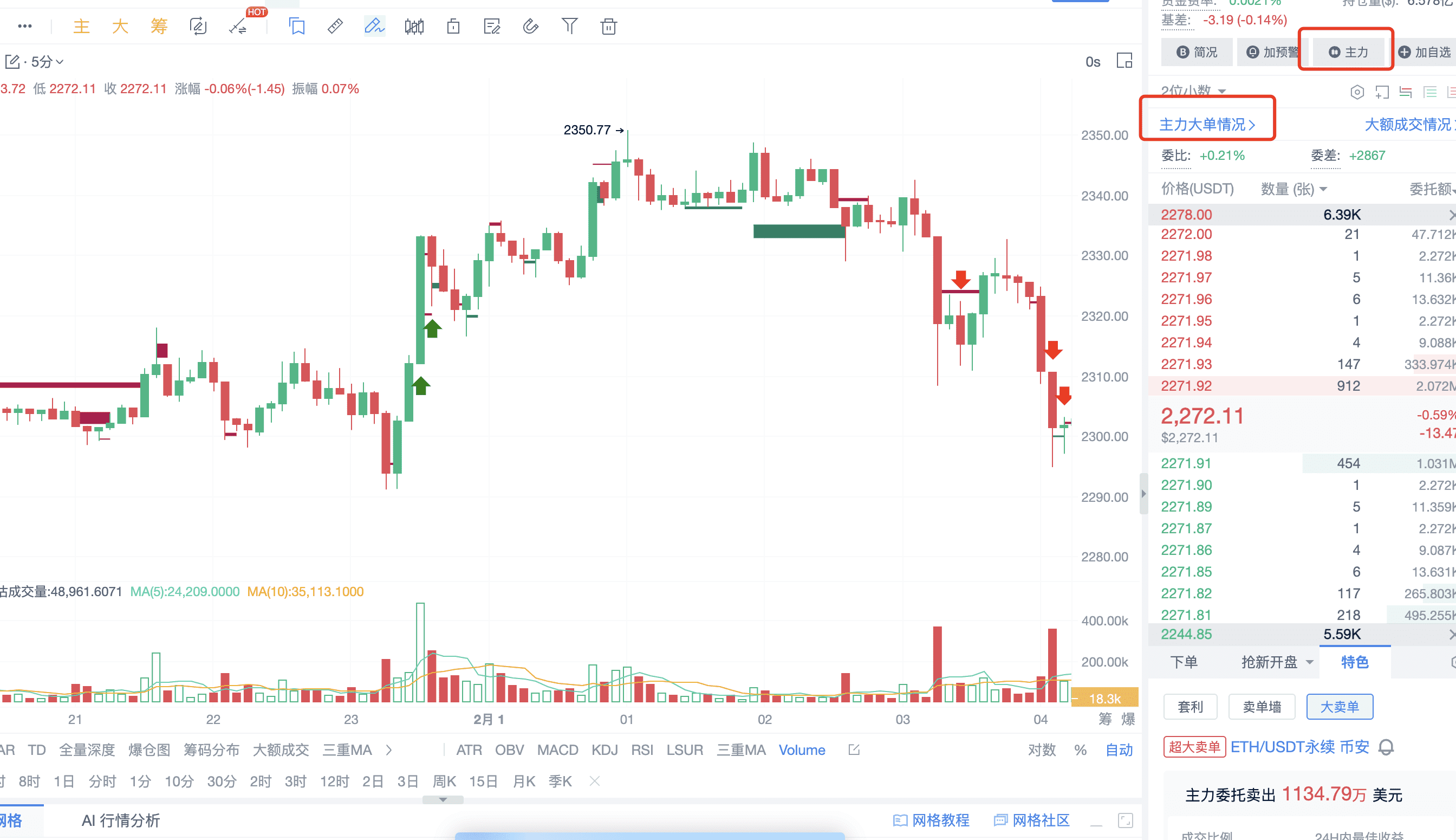
Look at the main force, which is to observe the continuous volume situation, and grasp market opportunities.
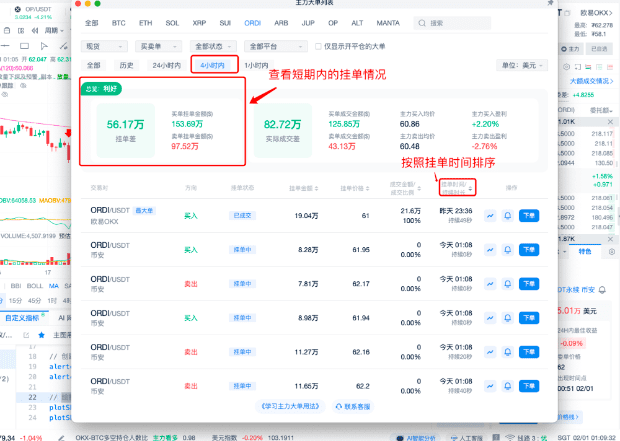
Second method: Select the main force large order from the indicator library and check the indicators.
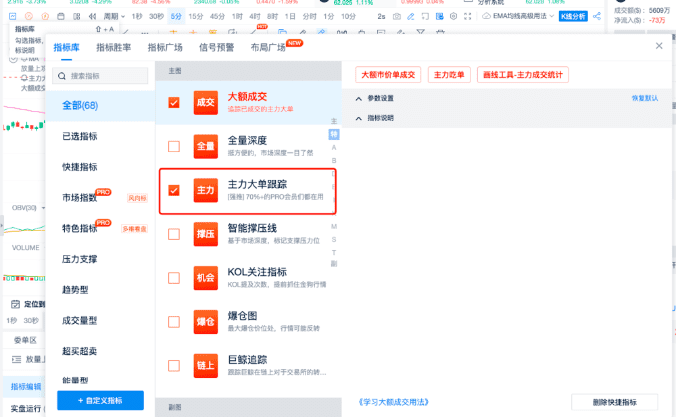
Third method: Set an alert.
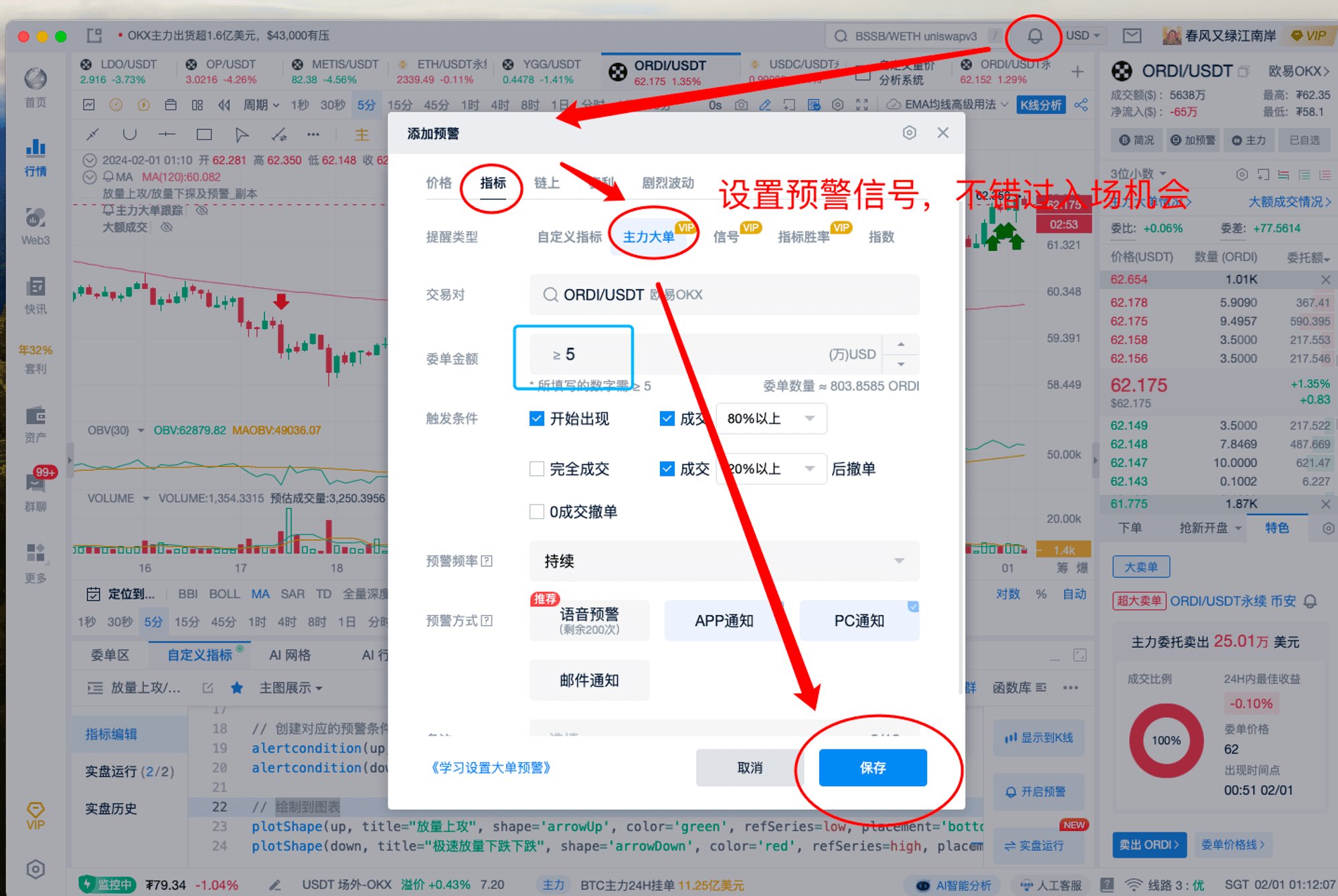
The PRO version K-line large order, real-time monitoring of large orders in the market, viewing the order situation, and setting real-time alerts to help users more efficiently determine the direction of the main force buying and selling, and more accurately grasp the entry opportunity. Click the link below to open the PRO group automatically: https://www.aicoin.com/zh-CN/vip
3. Summary of Volume-Price Structure Analysis Key Points:
• Principle:
Volume and price are determined by supply and demand and trading dynamics
• Be Slightly Relieved with Volume-Price Coordination
Large K-lines correspond to large trading volume, small K-lines correspond to small trading volume;
• Be Vigilant with Volume-Price Abnormalities
a. Different situations of large volume without price increase — opportunity at the bottom, observation needed in the middle, caution needed at the top;
b. Volume shrinkage and rise are more complex — the key is to see if there is volume-price coordination in the previous period.
III. Case Studies and Grasping Buying and Selling Points
1. Grasping Volume-Price Abnormalities, as shown in the following four steps
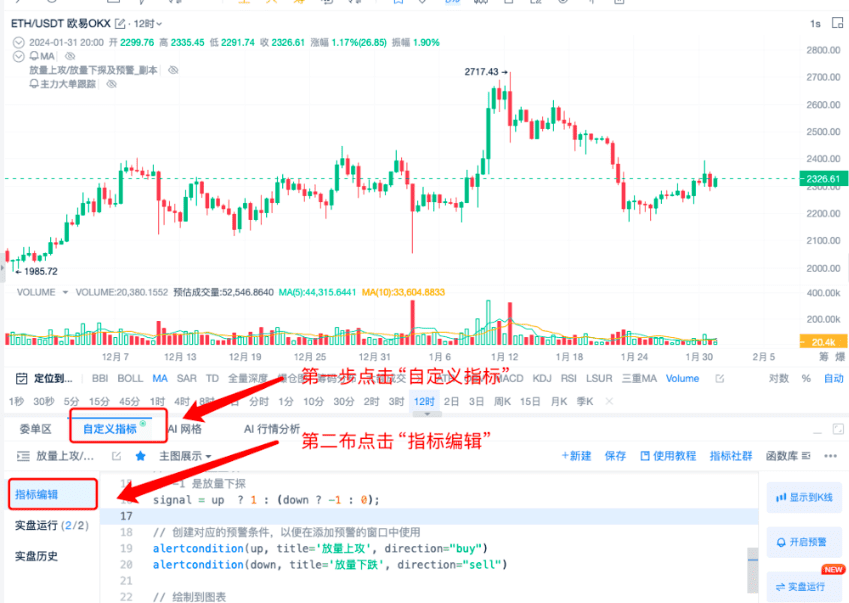
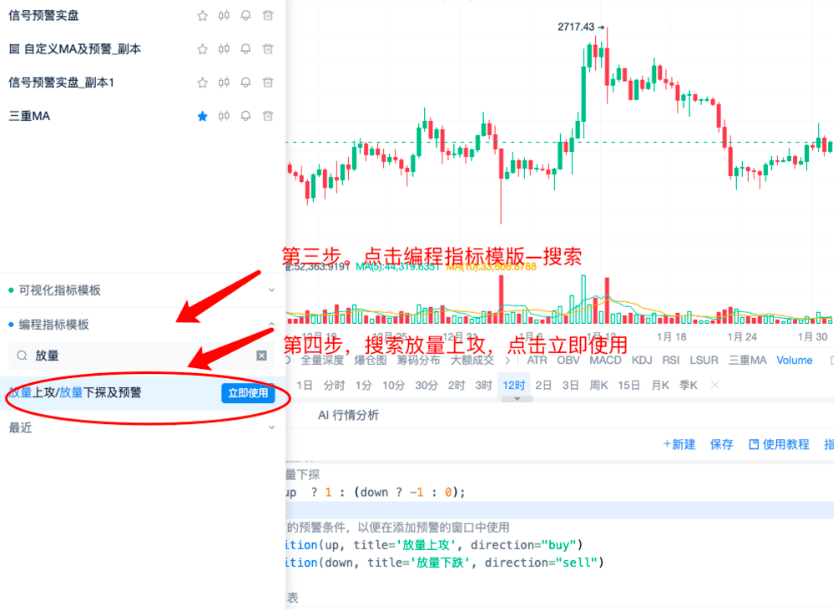
Finally, click "Save" and then click "Display on K-line".
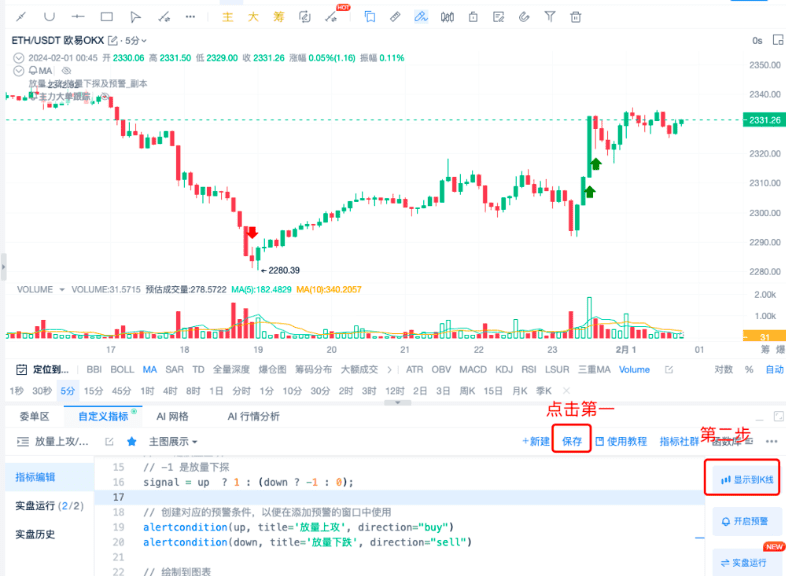
This way, the chart will display small arrows, and the positions of the small arrows are the opportunity points.
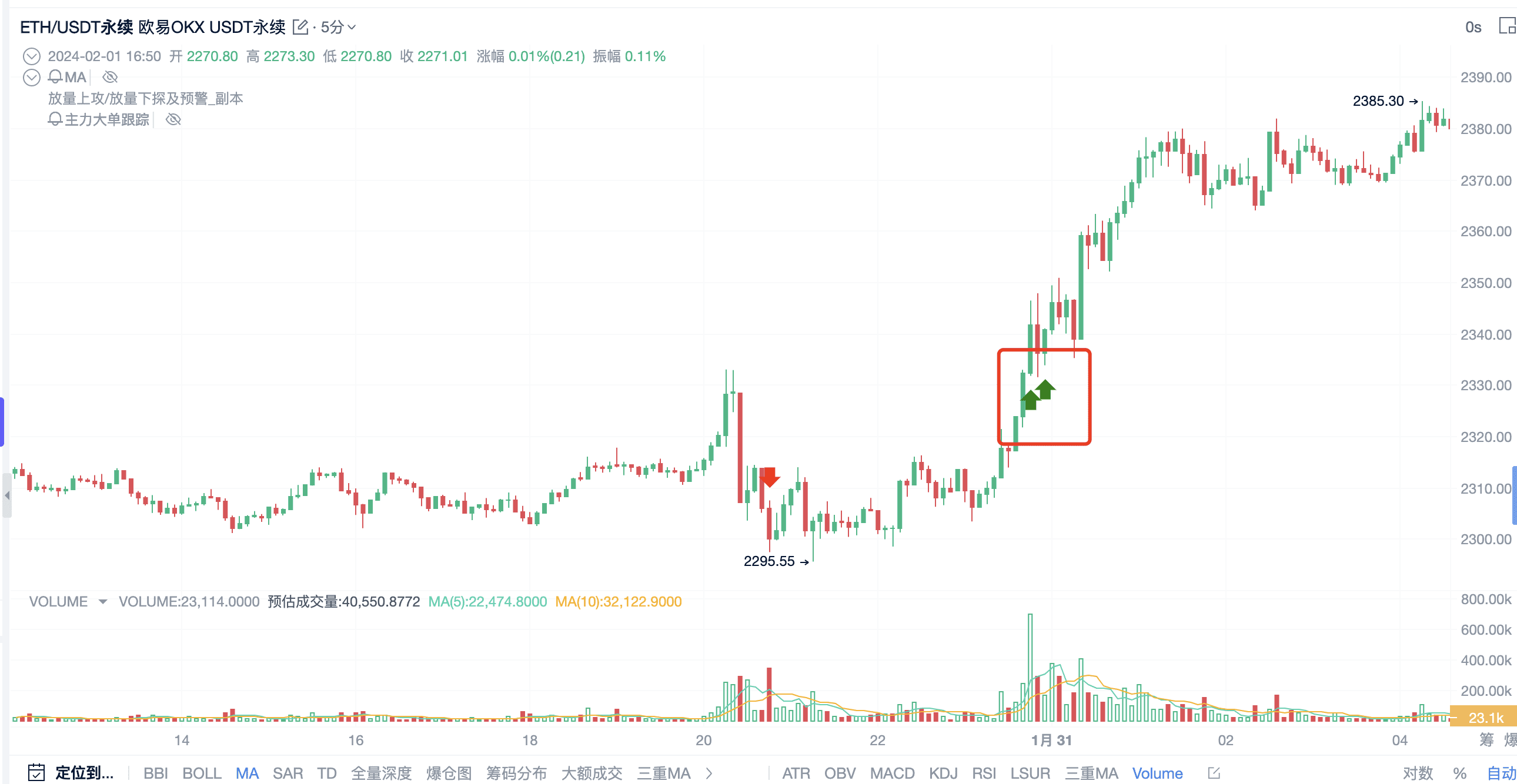
2. Application Scenarios of Indicators
Volume-based trading strategies for both volume increase and shrinkage typically work better in trading pairs with clear trends. This is because changes in trading volume can serve as a measure of trend strength and continuity. When a trading pair has a clear upward or downward trend, volume increase may indicate broad market support for the trend, increasing the likelihood of trend continuation.
Key Point: Volume increase indicates short-term bullishness; volume decrease indicates short-term bearishness
If you are unsure about parameter adjustment, join the "PRO CLUB" exclusive group chat. Our research institute will also be permanently stationed in the PRO group in the future; PRO members can communicate more with our research institute. At the same time, we will instantly release the latest exclusive data interpretation for PRO members. Click the link below to open the PRO group automatically: https://www.aicoin.com/zh-CN/vip
Recommended Reading
Automated Trading with EMA Indicator: A Guide to Maximizing Returns
Unveiling MACD: The Versatile Indicator in the Investment Field
For more live content, please follow AICoin's "News/Information-Live Review" section, and feel free to download AICoin PC-end for more.
免责声明:本文章仅代表作者个人观点,不代表本平台的立场和观点。本文章仅供信息分享,不构成对任何人的任何投资建议。用户与作者之间的任何争议,与本平台无关。如网页中刊载的文章或图片涉及侵权,请提供相关的权利证明和身份证明发送邮件到support@aicoin.com,本平台相关工作人员将会进行核查。
